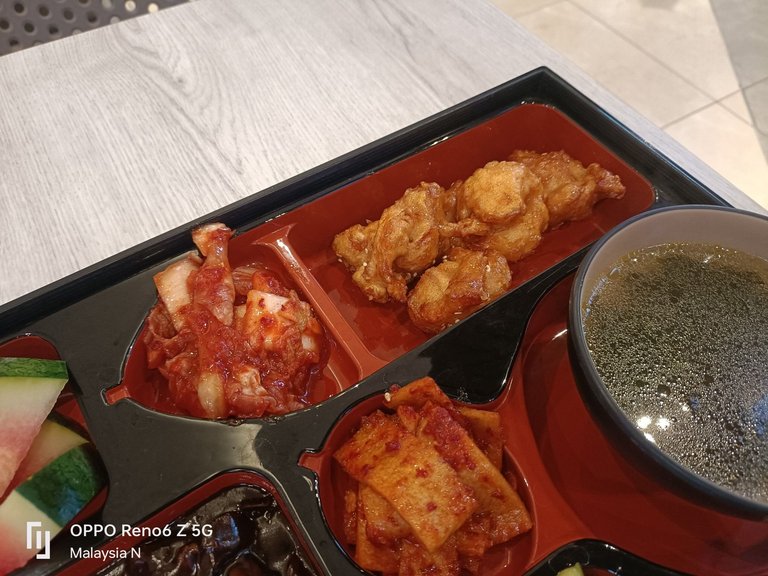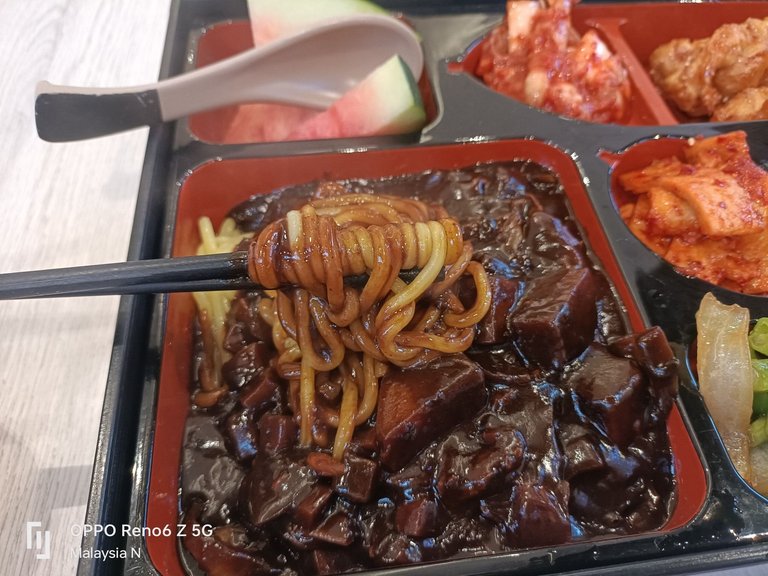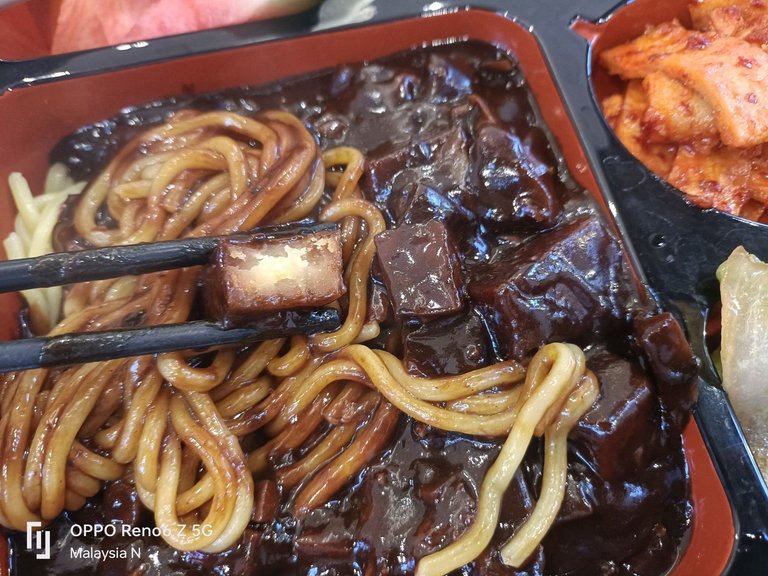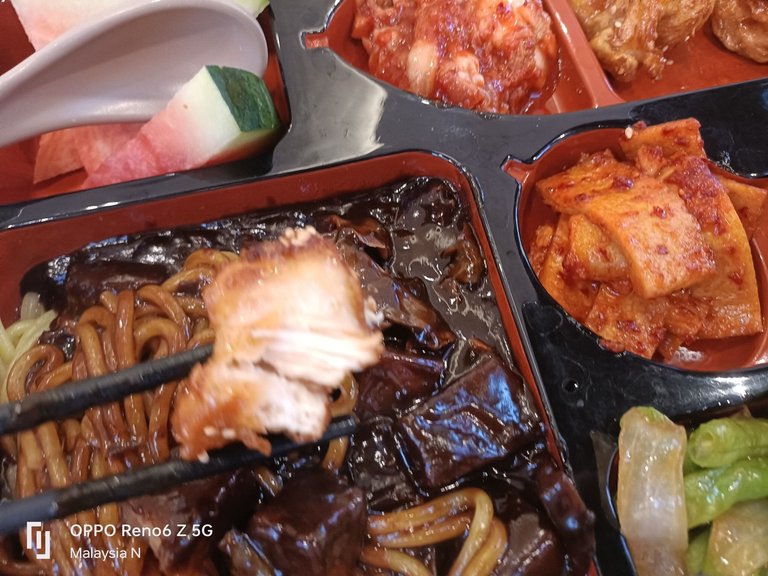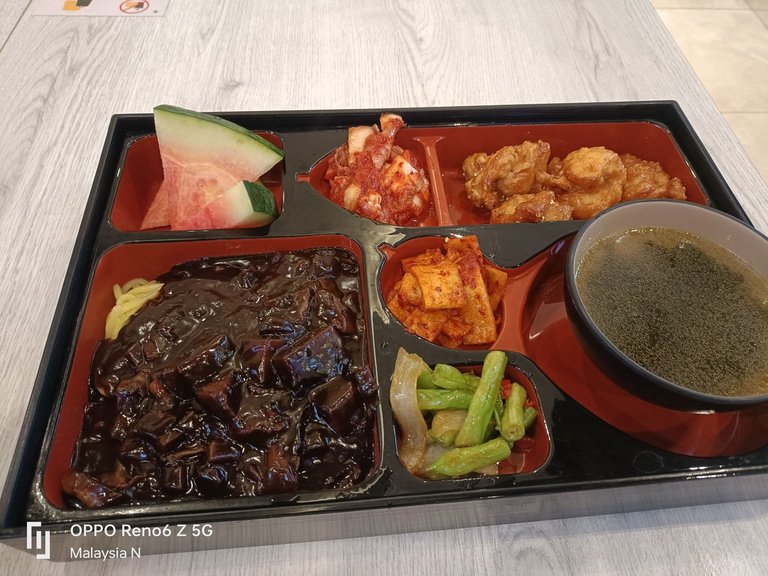

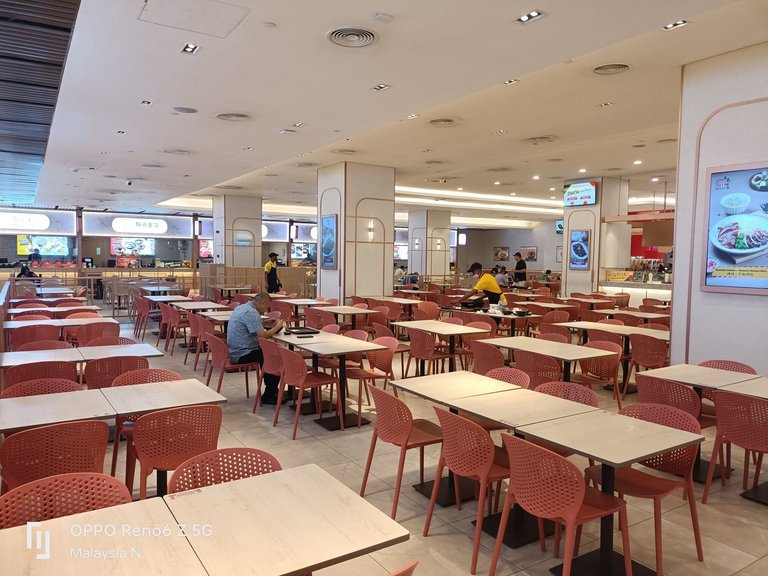
Today, I revisited the Food Place food court, located at Pavilion Mall. The food court is located beside the Oriental Kopi Restaurant.
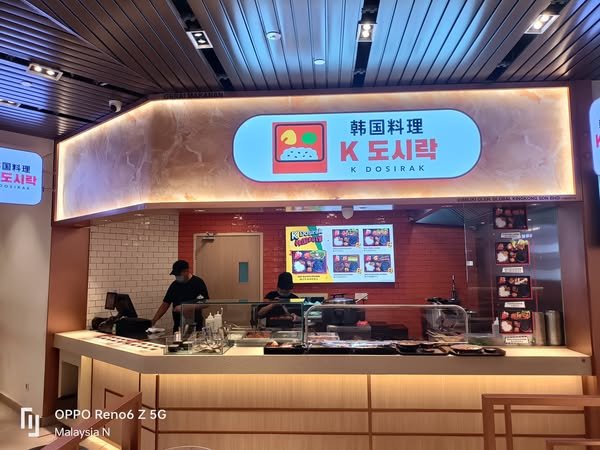

This time I ordered Jjajangmyeon Dosirak from the K Dosirak stall, which cost RM19.00 per box. This Korean-style lunchbox is a complete, colourful tray packed with Jjajangmyeon, Spicy Kimchi, Stir-fried fish cake, stir-fried green bean, Watermelon Slice and Miyeok-guk (Seaweed Soup)
The Jjajangmyeon is a thick, dark, and glossy sauce made from chunjang (a salty black soybean paste), stir-fried with diced meat and vegetables like onions and zucchini. The rich sauce is poured over thick, chewy wheat noodles.
Jjajangmyeon has a fascinating history that illustrates the fusion of Chinese and Korean cultures. The dish's roots trace back to the Chinese dish zhajiangmian (炸醬麵), which means "fried sauce noodles." This dish originated in the Shandong province of China and featured a savoury, slightly salty sauce made from fermented soybean paste.
In the late 19th and early 20th centuries, Chinese immigrants from Shandong brought zhajiangmian to the port city of Incheon, Korea, which was a hub of trade and immigration at the time. The dish quickly gained popularity among Chinese merchants and dock workers.
Over time, the dish was adapted to suit Korean tastes. Korean chefs added caramel to the chunjang paste, making the sauce sweeter, darker, and thicker than its Chinese predecessor. This unique Koreanized version of the dish became its own distinct cuisine, known as "Korean-style Chinese food."
The dish's popularity soared in the 1950s and 1960s after the Korean War. The availability of cheap wheat flour, supplied by the United States, made noodles an affordable and accessible staple. This, combined with the low cost of ingredients like onions and pork, turned Jjajangmyeon from a special occasion meal into a beloved, everyday comfort food for many Koreans.
Today, Jjajangmyeon holds a special place in Korean culture. It's often associated with celebratory events like graduation and is also famously eaten on "Black Day" (April 14th), a day for single people to gather and eat foods with a black colour.

